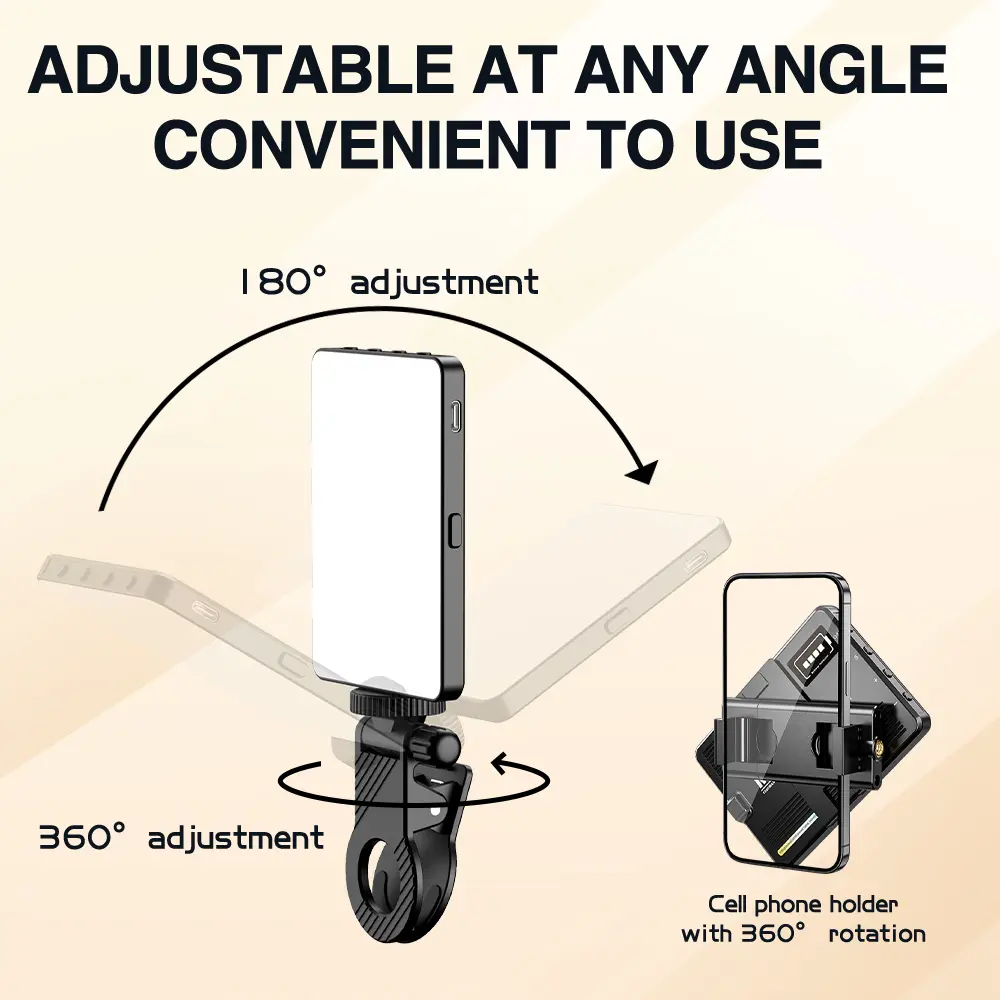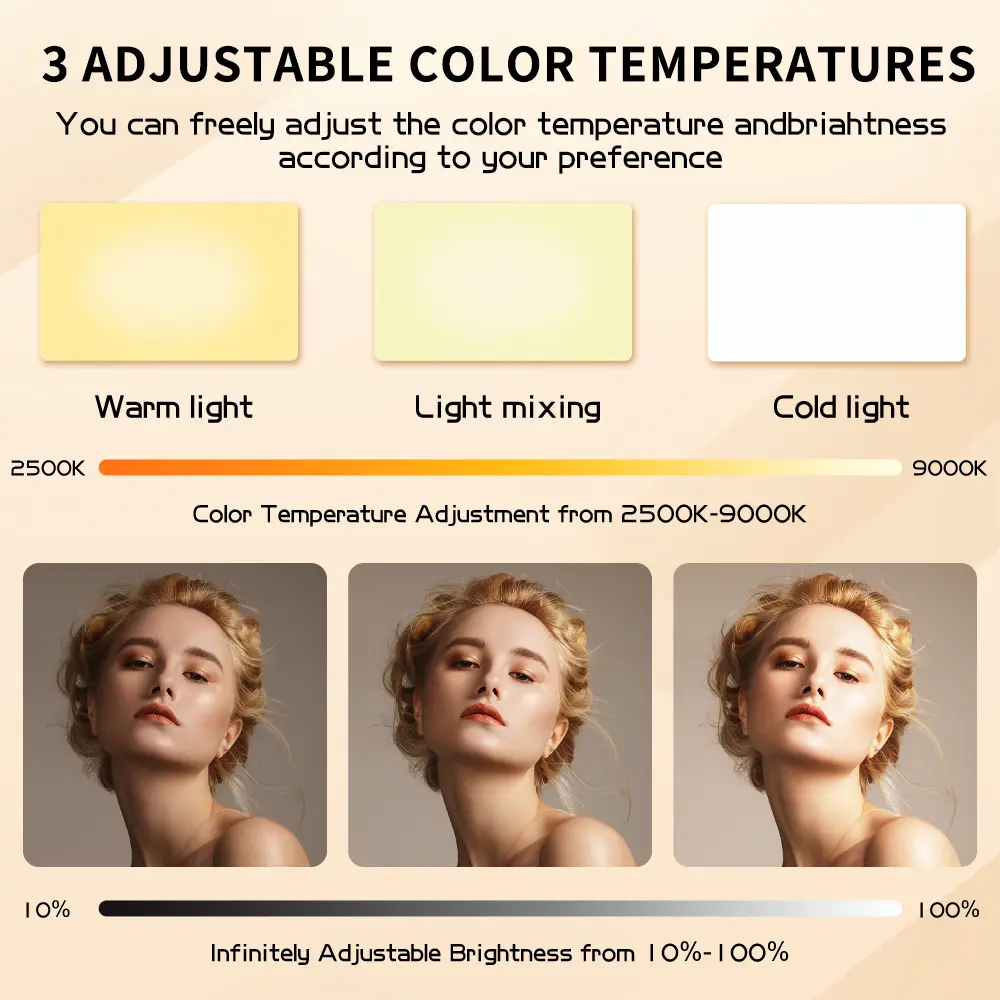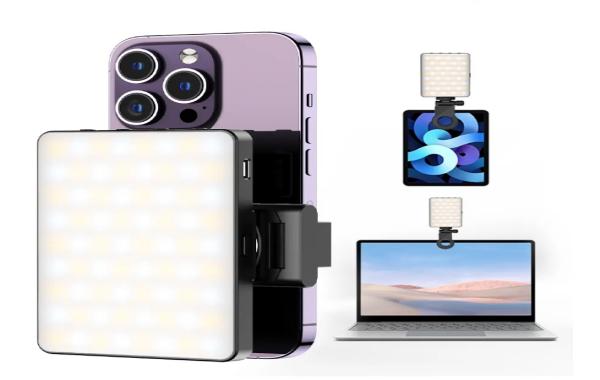ポケットフィルライトは、持ち運び可能なパッケージでプロ品質の照明を提供することで、モバイル写真に革命をもたらしました。小型でありながらパワフルなこのツールを使えば、強い日差しの下でポートレートを撮影する場合でも、薄暗い環境で商品を撮影する場合でも、フォトグラファーはどこにいてもバランスの取れたライティングを実現できます。かさばるスタジオライトとは異なり、ポケットフィルライトはカメラバッグに収まるサイズでありながら、正しく使用すれば驚くほど均一なライティングを実現します。
成功の秘訣は、この小さいが強力なツールを最大限に活用する方法を知ることだ。多くのフォトグラファーは、このような小さな光源で自然なライティングを作るのに苦労しており、その結果、厳しい影ができたり、撮影範囲が不均一になったりすることがよくある。
ポケットフィルライトの距離と角度をマスターする
ポケットフィルライトと被写体の関係は、ライティングの質に大きく影響します。多くの初心者はライトを近づけすぎて、きついフレアや影を作ってしまいます。被写体から3~5フィート(約1.5m)離し、30~45度の角度でライトを当ててみてください。このように投光距離を広くすることで、落差がより緩やかになり、影がよりソフトになります。グループ撮影の場合は、すべての被写体を均等にカバーするために、距離を6~8フィート(約1.5~2.5メートル)に伸ばしましょう。
角度も同様に重要です。ポケットライトの位置を目の高さより少し上にすると、自然光をシミュレートすることができ、45度のサイドライトは心地よい立体感を演出することができます。近くの壁や天井に光をバウンスさせると、非常にソフトな照明になります。

よりソフトなポケットフィルライトのためのディフュージョンのヒント
すべてのポケットライトは、適切なディフューザーから恩恵を受けます。多くのモデルにはディフューザーが内蔵されていますが、簡単な追加でさらに良い結果を得ることができます。つや消しのシャワーカーテンやパーチメントペーパーをライトの前に取り付けてみてください。プロのような仕上がりを求めるなら、ポケットフィルライト用に設計された折りたたみ式のソフトボックスを購入しましょう。ディフューザーの厚みは非常に重要です。ディフューザーの厚みが薄いほど、光量は多く保たれますが、明るさは弱くなります。複数のディフューザーを重ねて使うことで、光の質を完璧にコントロールできます。
環境光のバランス
均一な光を得るためには、ポケットフィルライトを既存の光源と調整する必要があります。まず、周囲の光に合わせてカメラの露出を設定し、次に自然光を遮ることなく影を和らげるのに十分な量のフィルライトを加えます。このバランスの取れたアプローチが、最も自然な結果を生み出します。明るい日差しの下では、ポケットライトをフルパワーにする必要があるかもしれません。室内での撮影では、25~50%のパワーで十分です。色温度のミスマッチに注意してください。もし ポケットライト カメラのホワイトバランスを調整するか、フィルターを使用してください。最近のポケットライトは色温度を調節できるものが多いので、周囲の光と競合するのではなく、補完するように設定できます。

均一なポケット・フィル・ライトを作る
ポケットフィルライトをバウンスさせると、即座に効果が高まります。白い壁や天井、携帯用レフ板など、被写体の近くに大きくてニュートラルな色の面を探してください。被写体に直接光を当てるのではなく、反射面に向けて光を当てます。このテクニックにより、小さなポケットライトが被写体を完璧に包み込む広がりのある光源に変わります。リフレクターやバウンスボードを被写体の近くに置くと、狭い場所でも効果的な反射面として機能します。クラムシェル」テクニックを試してみましょう。被写体の下にリフレクターを置き、上から光をバウンスさせることで、完璧に均一で影のないライティングが可能になります。シルバーのリフレクターはより高い光量を維持し、白のリフレクターはよりソフトで拡散効果があります。
複数のポケット・フィル・ライトを積み重ねることで、完璧なカバレッジを実現。
このガイドでは1灯のセットアップに焦点を当てていますが、2灯のセットアップも可能です。 ポケットフィルライト は、厄介なライティングシナリオを解決することができます。主光源としてリーディングライトを使い、セカンドライトは影を照らす微妙なフィルライトとして使います。フィルライトはカメラの軸に近い位置に置き、自然な効果を得るためにキーライトの4分の1程度のパワーに下げましょう。全身を均一に照らすには、2つの同じポケットライトを被写体の左右に45度の角度で配置します。どちらのライトも同じ出力に設定し、均等に拡散させるとバランスの取れたライティングになります。
プロフェッショナルな結果を出す
ポケットフィルライトで均一な配光をマスターするには、光の量だけでなく質も理解する必要があります。適切な拡散、戦略的なポジショニング、アンビエント・ライト・バランスなど、プロのコツを使えば、どこでもスタジオ並みのライティングを実現できる。これらのコンパクトなツールの真の威力は、その多用途性です。家庭用の素材を通して拡散させたり、思いがけない表面に反射させたりと、クリエイティブなソリューションを豊富に提供します。完璧な光は、多くの場合、劇的な変化ではなく、微妙な調整から生まれることを覚えておいてください。

